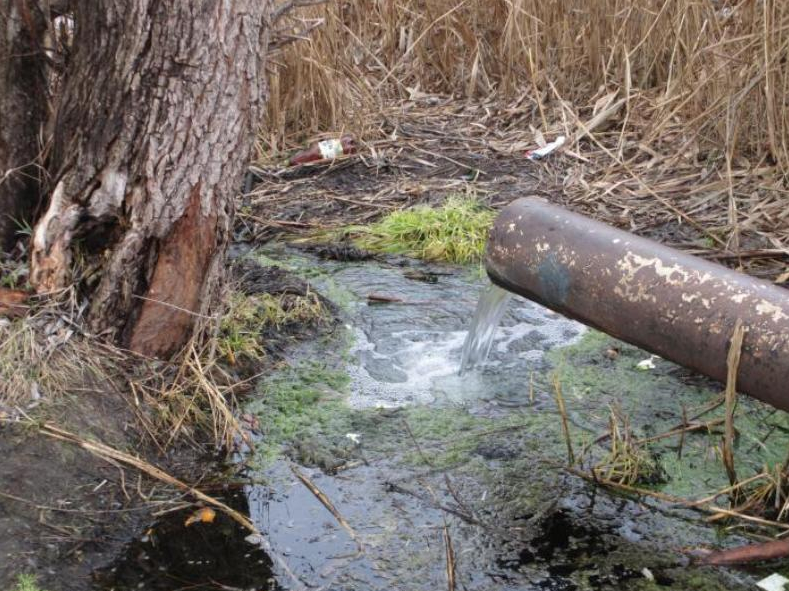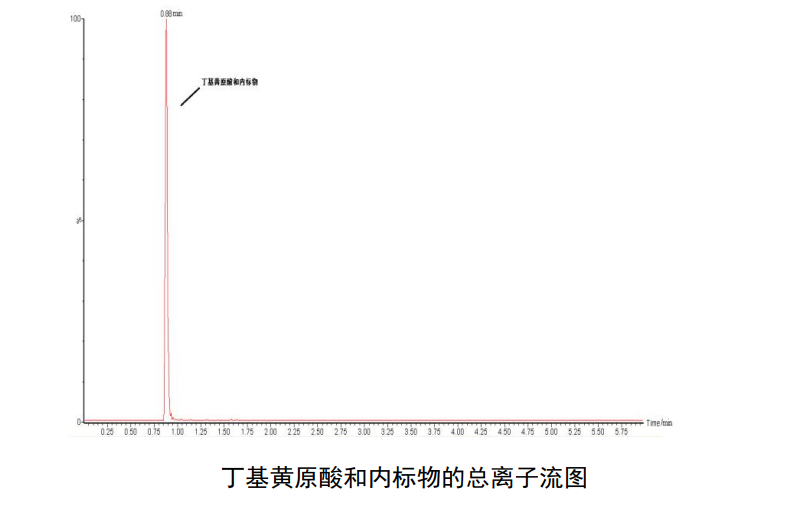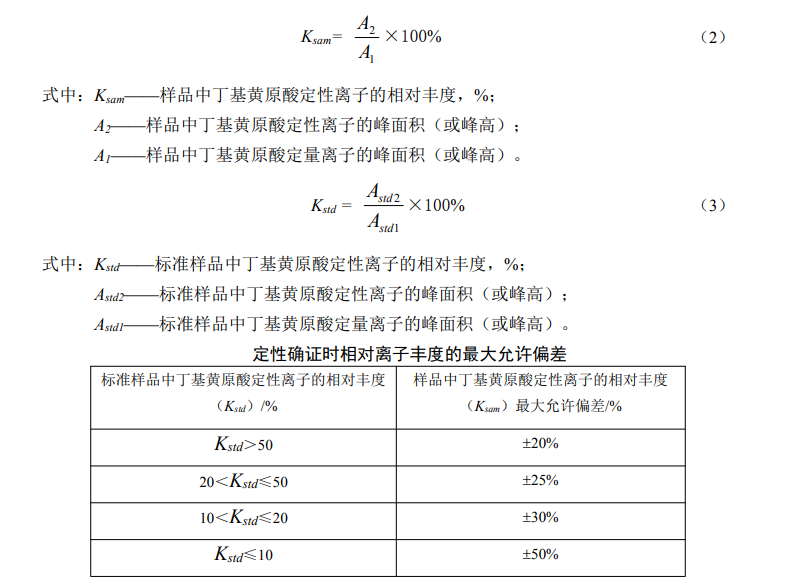The principle of liquid chromatography-mass spectrometry for the detection of butylxanthogen in surface water, industrial wastewater and other water quality is to separate the butylxanthogen in water samples by liquid chromatography, and then use a tandem mass spectrometer in multiple reaction monitoring (multiple reaction monitoring). MRM) conditions, qualitatively based on retention time and characteristic ions, and quantified by internal standard method.

10. Standard solution
10.1 Standard stock solution of butylxanthogen: 100mg/L.
Weigh 0.0330g potassium butylxanthate standard product, put it in a 250ml brown volumetric flask, add a small amount of water to dissolve, add 3 drops of sodium hydroxide solution to make the pH 9-10, and make up to 250ml with water. The stock solution can be stored refrigerated at 4°C and protected from light, and can be stored stably for 20 days. The standard stock solution of butylxanthogen can also be purchased directly from commercially available certified reference materials.
10.2 Standard use solution of butylxanthogen: 1.00mg/L.
Draw 1.00ml of the standard stock solution of butylxanthogen, put it in a 100ml brown volumetric flask, and make up to volume with ammonia solution. This solution is used now.
10.3 Internal standard (2,4-dichlorophenoxyacetic acid 13C6) stock solution: 100ug/ml.
Purchase certified standard solutions directly. The internal standard stock solution should be refrigerated at 4°C and protected from light or stored according to the manufacturer's product instructions.
10.4 Internal standard solution: 1.0ug/ml.
The internal standard stock solution was diluted with acetonitrile to 1.0ug/ml, and the internal standard solution was refrigerated at 4°C and stored in the dark or according to the manufacturer's product instructions.
11 Nitrogen: purity ≥99.9%.
12 Argon: purity ≥99.999%.


The instrument mass and resolution were calibrated for the liquid chromatograph/mass spectrometer, where the instrument mass shift was within ±0.5 Da, and the mass spectral peak half-width was between 0.6 Da and 0.9 Da.
Take a certain amount of butylxanthogen acid standard use solution in ammonia solution to prepare a standard series with 5 concentration points. The mass concentrations of butylxanthogen 50.0ug/L and 100ug/L, add 10.0ul internal standard solution per ml of standard series solution to make the mass concentration of internal standard 10.0ug/L, and store in a brown sample bottle.
Inject the standard series solutions in order of concentration from low to high, and take the product of the ratio of the peak area (or peak height) of butylxanthogen to the peak area (or peak height) of the internal standard and the concentration of the internal standard is the ordinate, the mass concentration of butylxanthogen in the standard series solution is the abscissa, draw a calibration curve, and the regression equation is shown in the formula y=a+bx.
The total ion chromatogram of butylxanthogen acid and internal standard is shown in the figure below

The water samples were tested according to the same procedure as for the establishment of the calibration curve. Blank test detection is also carried out according to this method.
Qualitative Analysis of Butylxanthogen
The detection is carried out according to the parent ion and product ion of butylxanthogen in the multiple reaction monitoring condition table of the target compound. Under the same experimental conditions, the retention time of butylxanthogen in the sample is the same as that in the standard sample. The absolute value of the relative deviation of the retention time of the acid should be less than 2.5%; and the relative abundance of the qualifier ion in the sample to be tested (Ksam, see Equation 2) and the corresponding qualifier ion relative abundance in the standard solution with close concentration (Kstd, see Equation 3) ) for comparison, and the obtained deviation is within the maximum allowable deviation range specified in the maximum allowable deviation of relative ion abundance during qualitative confirmation, then it can be determined that there is butylxanthogen in the sample.

After qualitative identification of butylxanthogen, according to the peak area (or peak height) of the quantitative ion, it is calculated by the internal standard method. The mass concentration of butylxanthogen in the water sample is calculated according to the formula p=p1xf.
The above content comes from 《Water Quality Determination of Butylxanthogen Acid Liquid Chromatography-Mass Spectrometry》
相关推荐